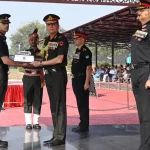When it comes to governmental roles in India, few positions carry the prestige and influence of an Indian Administrative Service (IAS) officer. As key pillars of the administrative framework of the country, IAS officers are responsible for implementing government policies, managing public administration, and ensuring law and order across various levels of governance. For aspiring civil servants, the IAS not only represents a promising career path but also offers attractive salaries, robust benefits, and solid career growth prospects. In this comprehensive examination of IAS officers’ salaries, benefits, and career growth trajectories, we will delve into what makes this profession not just a job, but a vocation that shapes the future of millions.
Historical Context
The roots of civil service in India date back to the British era when the Indian Civil Service (ICS) was established for governance purposes. With India gaining independence in 1947, the ICS was replaced by the Indian Administrative Service as the nation sought to rebrand its governance structure in line with democratic principles. The IAS emerged as a symbol of meritocracy, maintaining continuity in governance while also allowing the Indian populace to take over administrative responsibilities. Over the decades, the role of IAS has evolved but has remained a vital part of India’s governance structure, reflecting the country’s growing complexities and challenges.
The Significance of IAS Officers
With their entrenched influence over public policy and administration, IAS officers serve critical functions ranging from law enforcement to economic development and public welfare. They often act as the face of the government at various levels, interfacing directly with citizens and stakeholders. The responsibilities and powers associated with IAS roles also dictate a commensurate level of remuneration and benefits, making the position among the most sought-after careers in India.
IAS Officer Salary Structure in 2025
For the fiscal year 2025, the salary structure for IAS officers is defined by a clear pay scale which increases significantly with rank and experience. Below is a detailed breakdown of the hierarchical pay structure.
| Rank/Designation | Pay Level | Basic Pay (₹) | Approx. Total Salary (₹) |
|---|---|---|---|
| Junior Scale (Sub-Divisional Magistrate) | 10 | 56,100 | 80,000 – 1,00,000 |
| Senior Scale (Additional District Magistrate) | 11 | 67,700 | 1,00,000 – 1,30,000 |
| Junior Administrative Grade (Deputy Secretary) | 12 | 78,800 | 1,30,000 – 1,50,000 |
| Selection Grade (Director) | 13 | 1,18,500 | 1,50,000 – 1,80,000 |
| Super Time Scale (Joint Secretary) | 14 | 1,44,200 | 1,80,000 – 2,20,000 |
| Above Super Time Scale (Additional Secretary) | 15 | 1,82,200 | 2,20,000 – 2,50,000 |
| Apex Scale (Secretary) | 17 | 2,25,000 | 2,50,000+ |
| Cabinet Secretary | 18 | 2,50,000 | 2,80,000+ |
The basic pay ranges from ₹56,100 per month for Junior Scale officers to ₹2,50,000 for the Cabinet Secretary. However, the total salary—factoring in various allowances—can range from approximately ₹80,000 to over ₹2,80,000 per month, a notable amount considering the scale of public service.
Components of Salary: Basic Pay and Allowances
- Basic Pay: This is the fixed component of an IAS officer’s salary.
- Dearness Allowance (DA): This allowance is adjusted biannually to counter the fluctuations in inflation, ensuring that the purchasing power of IAS officers remains consistent. As of 2025, the DA can significantly increase total take-home salaries.
- House Rent Allowance (HRA): Depending on the posting location, HRA can range up to 24% of the basic pay in metro cities, providing IAS officers with substantial assistance in housing costs.
- Travel Allowance (TA): This covers expenses incurred during official travel and domestic relocations, which can be critical given the nature of their roles.
- Other Perks: IAS officers are entitled to various benefits such as government accommodation, official vehicles, medical facilities, pensions, and retirement benefits, which add considerable value to their total compensation package. Furthermore, special allowances may be available based on their posting and operational responsibilities.
Benefits of Being an IAS Officer
IAS officers receive an array of benefits that go beyond financial remuneration. These perks significantly enhance their quality of life and work experience:
- Job Security: Being part of a government system, IAS officers enjoy a high degree of job security, which is increasingly rare in many private sector roles.
- Pension Scheme: Post-retirement, IAS officers are entitled to pensions that ensure long-term financial stability, making it a lucrative career choice.
- Medical Facilities: Government officers have access to comprehensive health care, minimizing medical expenses for themselves and their families.
- Employee Welfare Schemes: Various welfare schemes are available, promoting the overall well-being of IAS officers.
- Career Development Programs: Opportunities for training and professional development are standard, ensuring IAS officers remain abreast of administrative practices and public policy changes.
Career Growth and Promotions in IAS
The career growth trajectory for IAS officers is structured, meritocratic, and steeped in tradition. Career progression generally follows a hierarchical structure, delineated clearly by ranks and years of service. Here’s a generic timeline for an IAS officer’s career progression:
| Years of Service | Typical Rank/Post |
|---|---|
| 1 – 4 | Sub-Divisional Magistrate/Assistant Secretary |
| 5 – 8 | Additional District Magistrate/Under Secretary |
| 9 – 12 | District Magistrate/Deputy Secretary |
| 13 – 16 | Director/Special Secretary |
| 16 – 24 | Joint Secretary/Divisional Commissioner |
| 25 – 30 | Additional Secretary/Principal Secretary |
| 30 – 33 | Additional Chief Secretary |
| 34 – 36 | Chief Secretary/Secretary |
| 37+ | Cabinet Secretary (Highest rank) |
Promotions in the IAS are contingent upon merit, seniority, and the vacancies available at the higher ranks. Regular performance evaluations and assessments during service contribute to an officer’s potential for further advancement.
Responsibilities by Rank
The responsibilities of IAS officers vary significantly by rank:
- Junior Scale Officers (Sub-Divisional Magistrates): Responsible for administration at the sub-district level, they ensure law and order, land revenue administration, and community welfare.
- District Magistrates: As heads of the district administration, these officers manage development programs, law enforcement, and public services, playing a crucial role in the local governance landscape.
- Joint Secretaries and Above: Responsible for leading departments, these officers focus on policy formulation, implementation, and inter-departmental coordination at state and central levels.
- Cabinet Secretary: This is the highest bureaucratic position, serving as the administrative head of the Government of India. The Cabinet Secretary coordinates the activities of various ministries and agencies, ensures policy execution, and advises the Prime Minister.
Challenges Faced by IAS Officers
Even though being an IAS officer may appear glamorous, it is fraught with challenges that demand resilience and determination:
- Workload and Pressure: The responsibilities can be overwhelming, often requiring officers to work long hours or deal with stressful situations like natural disasters or public unrest.
- Political Interference: Balancing administrative duties while respecting political dynamics can complicate decision-making processes.
- Public Scrutiny: Officers must constantly ensure transparency and accountability, as they are often in the public eye and subject to scrutiny, including from media and civil society.
- Change Management: As society evolves, IAS officers are expected to adapt to changes in public sentiment, technological advancements, and policy reforms.
Solutions to Challenges
To address these challenges, several measures can be put in place:
- Institutional Support: Developing support systems within government agencies can help relieve stress and manage crises more efficiently.
- Training Programs: Continuous training can equip IAS officers with modern administrative skills, enhancing their adaptability to dynamic challenges.
- Public Communication Strategies: Effective communication with citizens can build trust and reduce public scrutiny, promoting transparency in governance.
- Emphasis on Work-life Balance: Encouraging realistic workloads can help prevent burnout and maintain mental health.
Future Trends and Predictions
As India progresses into an era marked by rapid digital transformation, the role of IAS officers will likely evolve. Here are some trends to consider:
- Digital Governance: A strong emphasis will be placed on e-governance to enhance service delivery. IAS officers will need to embrace technology for efficient administration.
- Public Sector Innovation: New paradigms aimed at citizen engagement and welfare will emerge. Officers will need to be agile to adapt to innovative service delivery models.
- Interdisciplinary Roles: Candidates from diverse educational backgrounds will increasingly find opportunities in IAS, bringing fresher perspectives to governance challenges.
- Global Perspectives: The youth joining IAS will likely possess a global outlook, influencing policies to address not just local but international issues as well.
Conclusion
The Indian Administrative Service remains a beacon of opportunity, responsibility, and influence in the Indian governance landscape. With a well-defined salary structure, comprehensive benefits, and a reliable career growth trajectory, IAS positions are not just jobs— they are careers imbued with purpose. While challenges abound, the solutions and future trends offer promising pathways for aspiring civil servants. For those considering a journey in public service, IAS not only stands as a prestigious career choice but also as a noble vocation committed to the service of the nation.
As you contemplate the unique challenges and opportunities presented in an IAS career, it is essential to stay informed and prepared. Resources such as SSBCrack and SSBCrackExams offer invaluable study materials, online courses, and eBooks to guide you on this remarkable journey. Engage with these resources to carve out your path in one of India’s most prestigious service roles.













